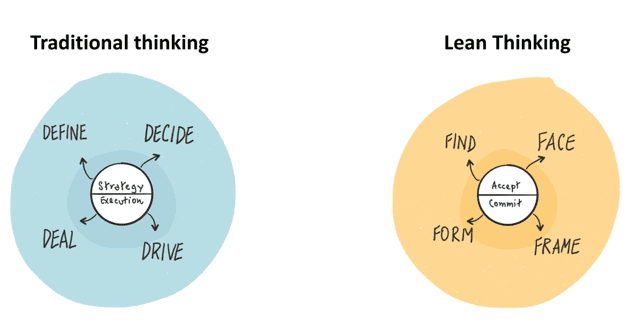
Michael Ballé on how to ensure lean leads to real advantages
FEATURE – Using the Japanese tradition of daruma dolls as an example, the author explains how to turn continuous improvement into concrete challenges – and, from that, real competitive advantage.
Words: Michael Ballé, lean author, executive coach and co-founder of Institut Lean France
I was recently back on the gemba of a plant I had visited several months ago, which makes high-tech components for sophisticated medical imagery equipment. In the intervening time, they had put in kanban cards and committed to trying jidoka by stopping their production cells whenever operators encountered a quality problem and trying to solve the issue immediately – whereas before they reworked the parts after final inspection.
They did this in a smart way. On a wall, they set up a huge whiteboard and drew a big fishbone graph to write down incidents as they occurred, separating Manpower, Materials, Machine, Method and Milieu components of the problems they were encountering. For every problem they solved, they concluded the exercise by gathering the operators in the cell and taking the time to give them a detailed explanation of the cause of the problem and the countermeasure to adopt (what to do and why).
Their efforts paid off: they reduced non-quality by a third and improved overall productivity by 10%, which I found quite impressive.
As they progressed, they erased from the fishbone diagram the part of the problem that was “fixed” but left the open-ended issues, taking away banal causes and progressively making deeper problems appear, such as temperature control in the room that affected certain processes, cleanliness, training or design issues.
And then real life happened.
There was a big quality crisis at a customer due to a design flaw in a new product – the team was able to identify the cause quite quickly, but this single problem wiped out all the progress that had been made on quality KPIs. Corporate got them to reintegrate inventory that had been previously counted elsewhere, which made their financials look like they were going backwards. New orders came in and top management decided to add a cell and re-layout the entire shop.
Not surprisingly, everyone felt discouraged and the debate over kaizen flared up all over again: small-step improvements were never going to get them anywhere.
Interestingly, talking to senior managers revealed that the extra orders were allocated to this plant precisely because of their progress (as well as all the other internal political reasons, but the clincher was their quality and productivity improvement that made the numbers work). But no one told the front-line managers and team members who did the job.
To my mind, this is the real risk of looking for performance improvement just for the sake of it, without quite knowing what to do with it. First, as goal posts move, there is no end to it, which is fair enough with “continuous improvement” but makes it hard to see oneself progress. On the whiteboard, the more the team advanced, the harder the problems that surfaced, and the greater the risk of discouragement. Second, it’s difficult to keep up efforts when you don’t benefit from them and someone else does. This is the kolkhoz (collective farms) problem in the Soviet model: if the sower and the reaper are different people, why would the sower improve sowing, or the reaper improve reaping, since they each feel someone else would take all the gains?
A core aspect of learning theory is that, in order to climb any real learning curve, people need to be clear on:
- The learning strategy: what it is they’re trying to learn and the overall plan to learn it?
- The score: how are points counted and how are wins distinguished from failures, to see if we progress?
- The search method: Where do we look for the next idea, what do we try next to continue to learn?
- The incentive: What’s the point? What are we after? Where is the gain? Why should we bother?
Thinking about it, this is pretty much what visual management does when done correctly, with a) visualizing the next job to do for customers (doing it well within takt without any problems), b) revealing abnormalities, c) showing standards to explore gaps in context to understand problems, and d) visualizing progress. But we seem to often fail at the fourth point – visualizing progress and thanking or rewarding the teams for it.
This reminded me of a quaint Japanese custom I’ve seen all over the world in different plants: rows of daruma dolls.
Daruma dolls are papier-mâché heads of Bodhidarma, the legendary founder of Zen Buddhism. They symbolize good luck, but also have a specific usage: when you make a wish or start a project, you blacken one of the two white eyes. When you achieve your goal, you blacken the second one, celebrate and move on to a new daruma.
As it often happens when studying Toyota and wondering how their lean thinking applies out of their specific cultural context – Japanese and automotive – it’s hard to distinguish folklore from the deep stuff that we need to learn and be inspired by in order to yokoten – copy and improve.
Daruma thinking is about tackling large projects in an open-ended way, not the usual project management. It is about creating concrete steps on the endless journey to improvement in order to be able to take a deep breath, pat ourselves on the back and look at what has been accomplished, as well as the steep climb ahead. This is not about folklore; this is about understanding that human motivation is not just the root of progress, but it is also a result of seeing oneself progress.
Too often, we keep interpreting lean practices in a mechanistic, people-free way. “Of course people should improve their processes, isn’t that what they’re paid for?” Too often, senior management thinks people’s role is to deliver results so they can be used to either reinvest or pay top salaries and shareholders. This is just crazy. People will give their best if they see themselves progress, both as people, through self-development, and in the regard they’re given in the form of respect, career advancement and cold hard cash.
As shown by the whiteboard and the 5M fishbone diagram on it, the physical improvements on the line are only the reflection, the echo if you will, of the learning and deeper knowledge of front-line managers and operators. Concrete improvements that can be turned into financial improvements first stem from personal improvements: deepening of understanding, changing of behavior, realizing oneself more deeply in one’s job and coming up with creative ideas about finding better ways to do so.
But if this energy is not seen in a strategic way by senior executives, it remains fragile and can easily go to waste – which is why so many operational improvement successes are so hard to sustain over time. Strategic thinking is there to define the higher-order goals, such as, shut down the warehouse, take in the new product on the existing cell, take in an increase of orders with the same equipment and number of people, use the improvements on the cell to redesign a higher-value product with greater quality and lower cost (what value analysis/value engineering is really about). This “helicopter thinking” that successful lean leaders practice, to constantly move from looking at the business game as a whole and then doing deep dives into the finest operational details is precisely about defining clear, ambitious – and more importantly concrete – projects that all people in the business can understand and relate to, even if they think it’s an impossible challenge.
Daruma thinking may be a key missing piece in our understanding of lean, a way to visualize the “challenge” dimension of lean thinking: how to break down continuous improvement into concrete challenges where all can understand intuitively what we’re trying to do, why this is important and where they will benefit personally. Twenty-five years down the line, we know a lot about how to use shopfloor tools to get teams to study their own processes and improve their work, but we still have so much to learn about the techniques to turn kaizen gains into competitive advantage.
As we argue in The Lean Strategy, lean thinking differs radically from traditional business thinking:

Lean thinking is about first finding the right problems (as the front-line managers have done on the shopfloor by using kanban cards and learning from every quality alert) and facing the deeper issues, (such as the design problems that stymied them, or the environmental controls they were struggling with) – and then framing these issues into larger, concrete challenges, to bring in the energy and motivation from people to shape solutions with them as they go. We know all about the continuous improvement tools. We now need to learn more about the second part of the lean thinking cycle – framing and forming – to better support talent and passion and turn those into lasting competitive advantage.
THE AUTHOR

Read more


FEATURE – One of the things making lean thinking so hard to explain in general terms is its dual nature as both an organizational and managerial approach. The authors explain how to handle this tension.


FEATURE – The only way for lean to succeed is to change a leader’s behavior so the rest of the organization will change too and people get the support they need to become problem solvers.



CASE STUDY - This article reports on the efforts that Erasmus Medical Center in the Netherlands has made to apply Theory of Constraints to patients' length of stay.


FEATURE – In March 2019, this hospital partnered with the Lean Global Network on a two-day Jishuken event. Nearly two years later, the authors reflect on the legacy of that initiative.

